Nestled in the lap of the Himalayas, Uttarakhand is a land of spirituality and divine serenity. The state is dotted with numerous temples, each holding a unique cultural and religious significance. Pilgrims and tourists alike are drawn to these sacred sites, seeking solace and spiritual enlightenment. In this guide, we will take you on a journey to discover 20 of the most popular temples in Uttarakhand, each contributing to the rich tapestry of the region’s religious heritage.
Kedarnath Temple
- Location: Kedarnath, Rudraprayag district (Garhwal region)
- Deity: Lord Shiva
- Built In: Ancient, dates back to Mahabharata era
- Best Time to Visit: May to June and September to October
- How to Reach: Trek from Gaurikund or use helicopter services
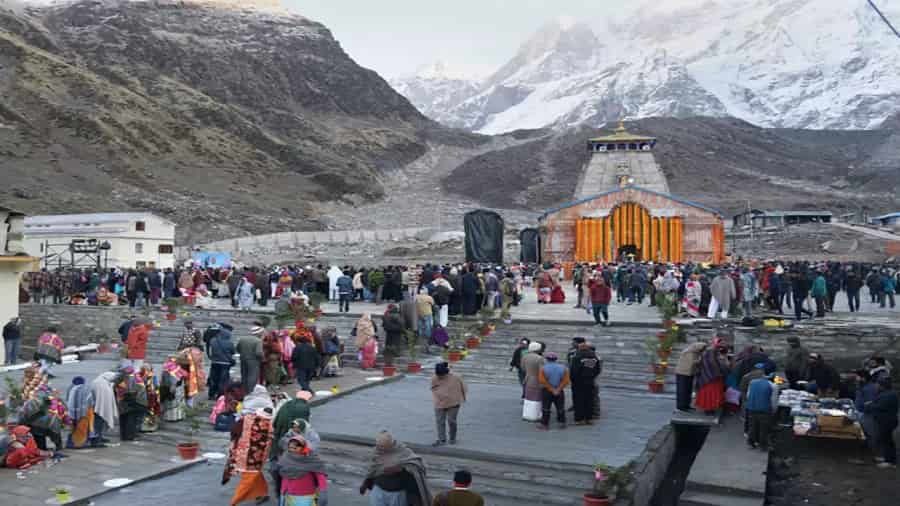
Located in the Rudra Himalaya range, Kedarnath Temple is one of the holiest shrines in Hinduism, dedicated to Lord Shiva. Positioned at an altitude of 3,583 meters, the temple is part of the Chota Char Dham Yatra and holds immense religious significance. The temple’s construction is attributed to the legendary Adi Shankaracharya and features a unique architecture, with a massive stone Lingam as the main deity. Pilgrims undertake a challenging trek to reach Kedarnath, passing through picturesque landscapes, making the pilgrimage not only a spiritual journey but also a test of physical endurance.
- Suggested Tour: Kedarnath Tour Packages
Badrinath Temple
- Location: Badrinath, Chamoli district (Garhwal region)
- Deity: Lord Vishnu (Badri)
- Built In: Reconstructed in the 8th century by Adi Shankaracharya
- Best Time to Visit: May to June and September to October
- How to Reach: Accessible by road from Joshimath
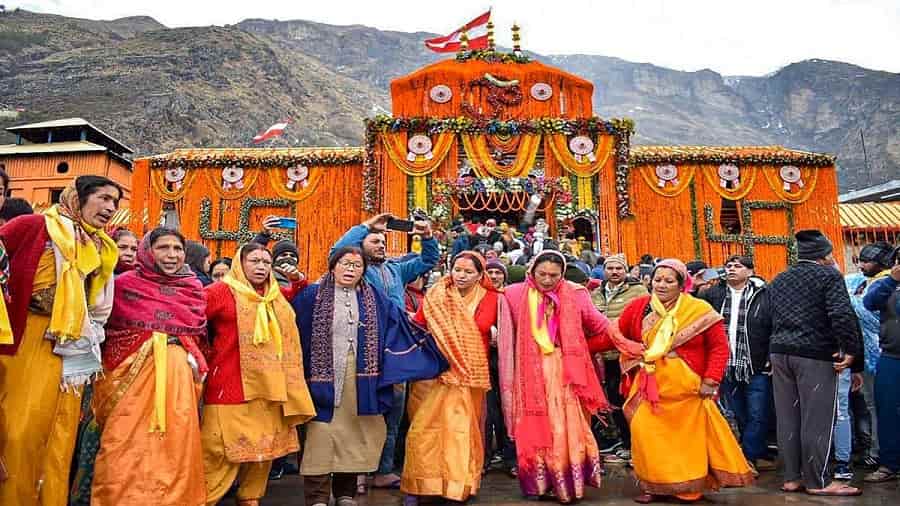
Perched on the banks of the Alaknanda River, Badrinath Temple is a prominent pilgrimage site dedicated to Lord Vishnu. It is one of the Char Dham temples and a crucial stop for devotees seeking spiritual fulfillment. The temple’s vibrant idol of Lord Badrinarayan, made of black stone, is a focal point of worship. Surrounded by snow-capped peaks, the temple’s surroundings add to the ethereal ambiance. The sacred Tapt Kund, a hot water spring near the temple, is believed to possess medicinal properties, attracting devotees for ritualistic baths before entering the temple.
- Suggested Tour: Badrinath Tour Packages
Yamunotri Temple
- Location: Yamunotri, Uttarkashi district (Garhwal region)
- Deity: Goddess Yamuna
- Built In: 19th-century temple by Maharani Guleria of Jaipur
- Best Time to Visit: May to June and September to November
- How to Reach: Trek from Hanuman Chatti or use ponies
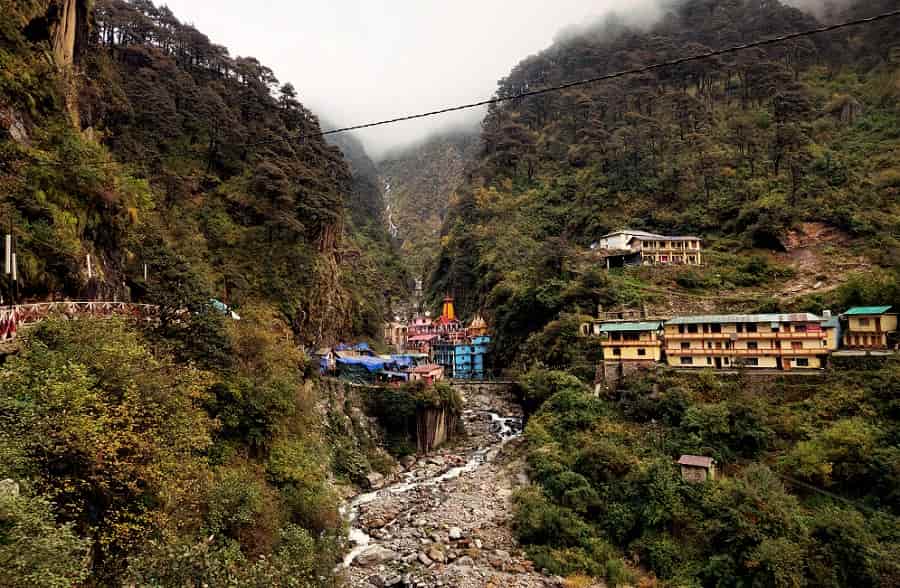
The Yamunotri Temple, perched at an altitude of 3,293 meters, marks the source of the Yamuna River. Dedicated to Goddess Yamuna, the temple is reached after an arduous trek through the Garhwal Himalayas. Pilgrims offer prayers at the Divya Shila, a rock pillar near the temple believed to have divine powers. The temple houses an intricately carved silver idol of the goddess and offers breathtaking views of the surrounding peaks. The Yamunotri pilgrimage is not just a spiritual quest but also an opportunity to immerse oneself in the pristine beauty of the Himalayan landscapes, making it a holistic experience for the devotees.
- Suggested Tour: Yamunotri Tour Packages
Gangotri Temple
- Location: Gangotri, Uttarkashi district (Garhwal region)
- Deity: Goddess Ganga
- Built In: 18th-century temple by Amar Singh Thapa
- Best Time to Visit: May to June and September to November
- How to Reach: Drive or trek from Uttarkashi
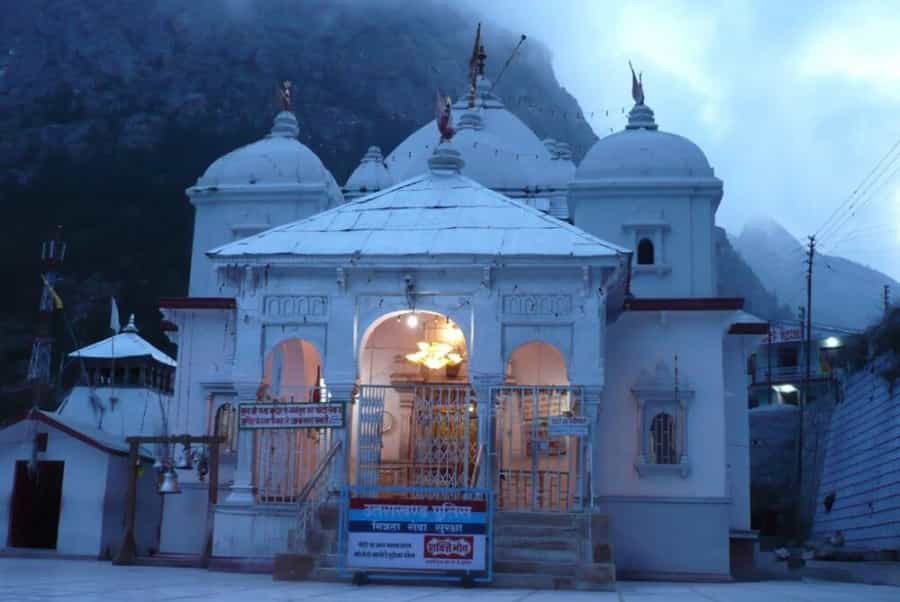
Nestled in the scenic Garhwal Himalayas, Gangotri Temple marks the spiritual source of the Ganges River. Dedicated to Goddess Ganga, this sacred shrine is perched at an elevation of 3,100 meters. Pilgrims undertake a challenging trek to reach the temple, passing through picturesque landscapes and serene valleys. The temple, constructed by General Amar Singh Thapa in the 18th century, is a fine example of Himalayan architecture. The spiritual aura of Gangotri is heightened by the mesmerizing views of the Bhagirathi peaks and the Bhagirathi River flowing beside the temple.
- Suggested Tour: Gangotri Tour Packages
Hemkund Sahib
- Location: Chamoli, Chamoli district (Garhwal region)
- Deity: Guru Gobind Singh Ji
- Built In: 20th-century Sikh Gurudwara
- Best Time to Visit: June to September
- How to Reach: Trek from Govindghat
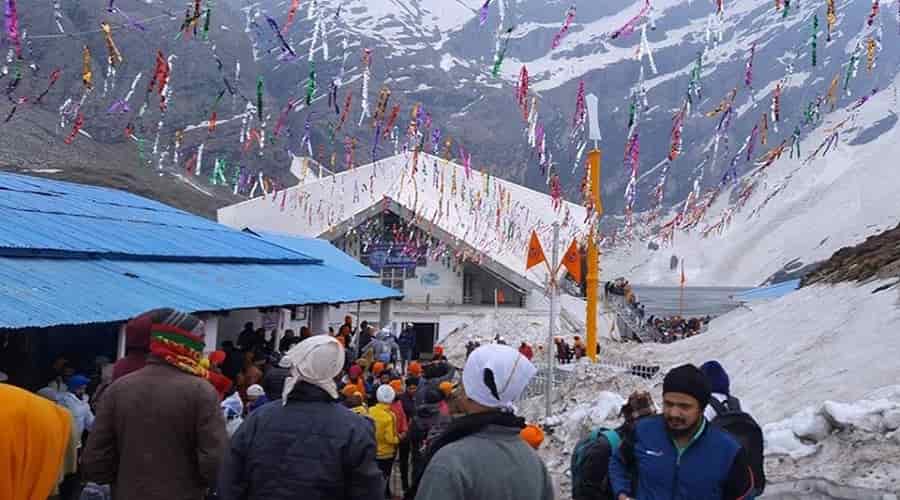
Tucked away in the Himalayan splendor, Hemkund Sahib is a revered Sikh pilgrimage site located at an altitude of 4,572 meters. Dedicated to Guru Gobind Singh, the tenth Sikh Guru, the gurdwara at Hemkund Sahib is surrounded by seven snow-capped peaks. The journey to this sacred site involves a trek through alpine meadows and rhododendron forests, providing a transformative experience for devotees. The pristine Hemkund Lake near the gurdwara adds to the spiritual allure, making it a place of deep meditation and reflection for pilgrims.
Jageshwar Dham
- Location: 36 kilometres northeast of Almora (Kumaun region)
- Deity: Lord Shiva
- Built In: 8th to 15th centuries by Katyuri rulers
- Best Time to Visit: March to June and September to November
- How to Reach: Drive or trek from Almora
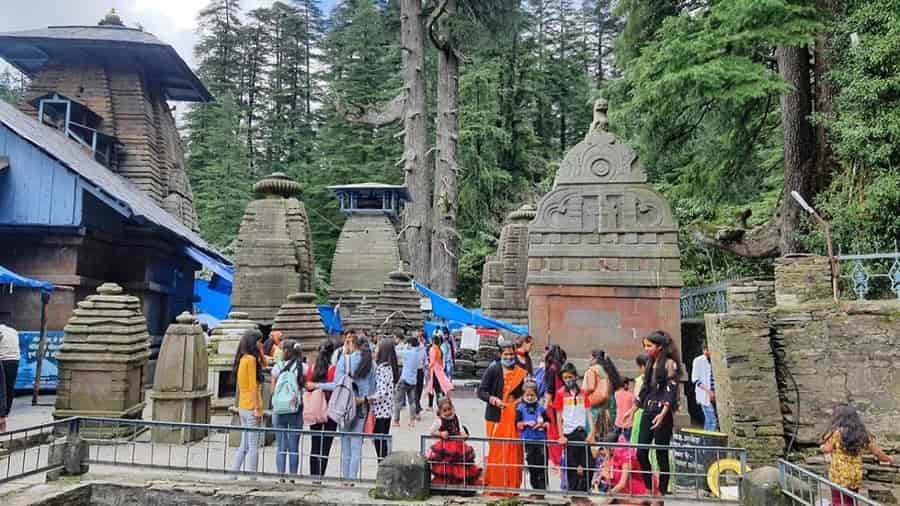
Nestled amidst dense deodar forests, Jageshwar Dham is a complex of 124 ancient temples dedicated to Lord Shiva. Dating back to the 9th to 13th centuries, these intricately carved temples showcase the architectural brilliance of the Katyuri dynasty. Surrounded by a spiritual aura, each temple in the complex is adorned with unique carvings and sculptures. The Jageshwar Archaeological Museum nearby further enriches the experience, providing insights into the historical and cultural significance of this sacred site. Pilgrims and art enthusiasts alike find solace and inspiration in the serene atmosphere of Jageshwar.
Chandi Devi Temple
- Location: 4 kilometres from Har ki Pauri at a hill top of Neel Parvat
- Deity: Goddess Chandi
- Built In: 1929 by Suchat Singh
- Best Time to Visit: Throughout the year
- How to Reach: Cable car or trek from Haridwar
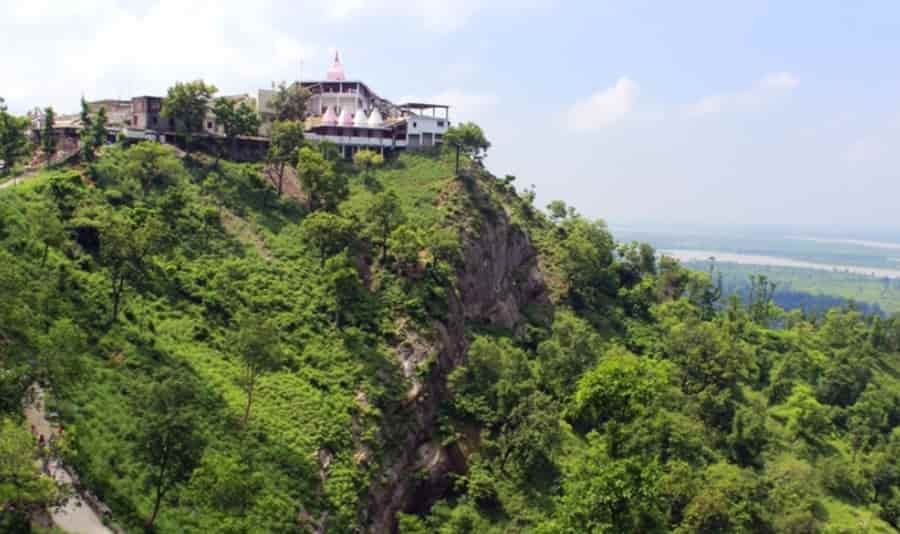
Perched atop Neel Parvat in Haridwar, Chandi Devi Temple is dedicated to Goddess Chandi, a fierce form of Goddess Parvati. The temple is not only a spiritual haven but also offers panoramic views of the holy city of Haridwar and the Ganges River flowing below. Devotees often undertake a challenging trek or opt for the cable car ride to reach the temple, adding an adventurous touch to the pilgrimage. The main deity, Chandi Devi, is believed to fulfill the wishes and protect her devotees from evil forces, attracting pilgrims from far and wide seeking divine blessings.
Mansa Devi Temple
- Location: Perched atop Bilwa Parvat in the Sivalik Hills, Haridwar
- Deity: Goddess Mansa
- Built In: Ancient, rebuilt in the 20th century by Maharaja Gopal Singh
- Best Time to Visit: Throughout the year
- How to Reach: Cable car or trek from Haridwar
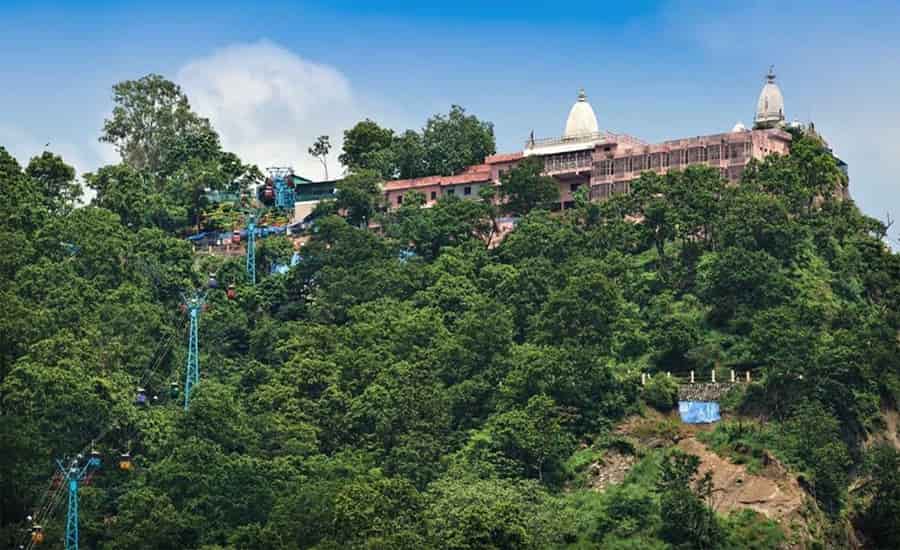
Another significant temple in Haridwar, Mansa Devi Temple is dedicated to Goddess Mansa, considered the wish-fulfilling deity. Situated atop Bilwa Parvat, devotees can reach the temple either by a trek or by using the cable car. The temple is adorned with two idols of the goddess, each symbolizing different aspects of her divine presence. Mansa Devi Temple holds a unique tradition where devotees tie threads around the sacred tree within the temple complex, symbolizing their wishes and prayers. The panoramic views of Haridwar from the temple premises add to the spiritual ambiance of this revered site.
Naina Devi Temple
- Location: Ayarpatta, Nainital (Kumaun region)
- Deity: Goddess Naina Devi
- Built In: Ancient, rebuilt in the 15th century
- Best Time to Visit: Throughout the year
- How to Reach: Drive or trek from Nainital
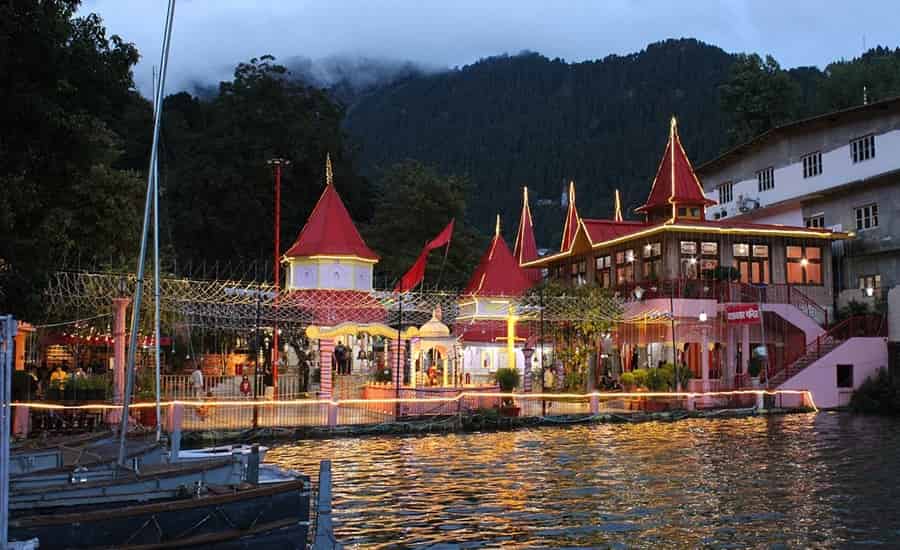
Located on the northern shore of Naini Lake in Nainital, Naina Devi Temple is dedicated to Goddess Naina Devi. According to Hindu mythology, it is believed that the eyes of Goddess Sati fell at the very spot where the temple stands today. The temple’s architecture reflects a blend of North Indian and Tibetan styles, and the colorful festivals celebrated here, such as Nanda Ashtami, attract pilgrims and tourists alike. Pilgrims often combine a visit to Naina Devi Temple with a serene boat ride on Naini Lake, creating a spiritual and picturesque experience in the heart of Uttarakhand.
Koteshwar Mahadev Temple
- Location: Koteshwar Chopda Road, India, Rudraprayag (Garhwal region)
- Deity: Lord Shiva
- Built In: Ancient
- Best Time to Visit: May to June and September to November
- How to Reach: 4 km from Rudraprayag
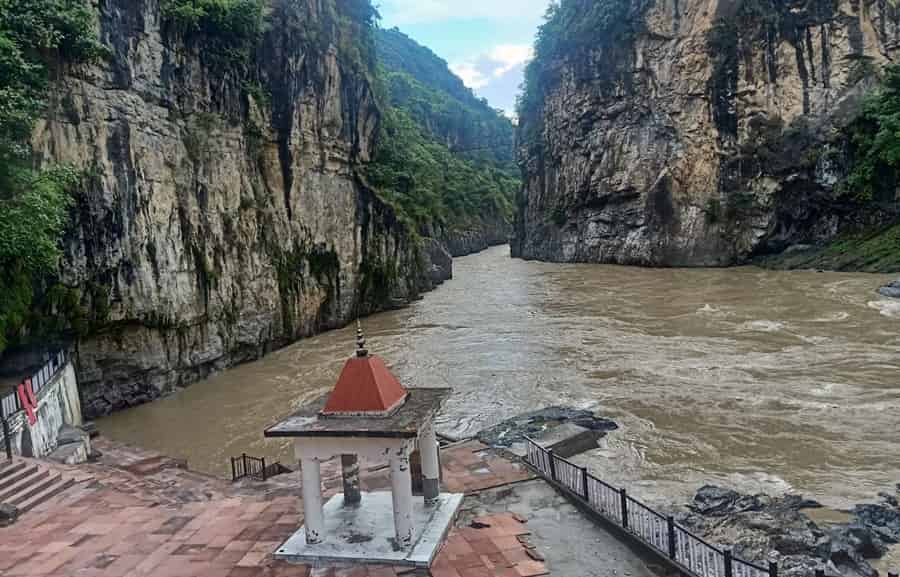
Tucked away in a natural cave near Rudraprayag, Koteshwar Mahadev Temple is a hidden gem dedicated to Lord Shiva. The temple holds immense significance as it is believed to be the spot where Lord Shiva meditated before proceeding to Kedarnath. Surrounded by pristine beauty and the confluence of Alaknanda and Mandakini rivers, the temple offers a tranquil and spiritual retreat. Pilgrims often take a short trek through the rugged terrain to reach this sacred site, enhancing the sense of devotion and connection with nature.
Tapkeshwar Temple
- Location: Tapkeshwer Rd, Birpur, Dehradun (Garhwal region)
- Deity: Lord Shiva
- Built In: Ancient
- Best Time to Visit: Throughout the year
- How to Reach: Drive or trek from Dehradun
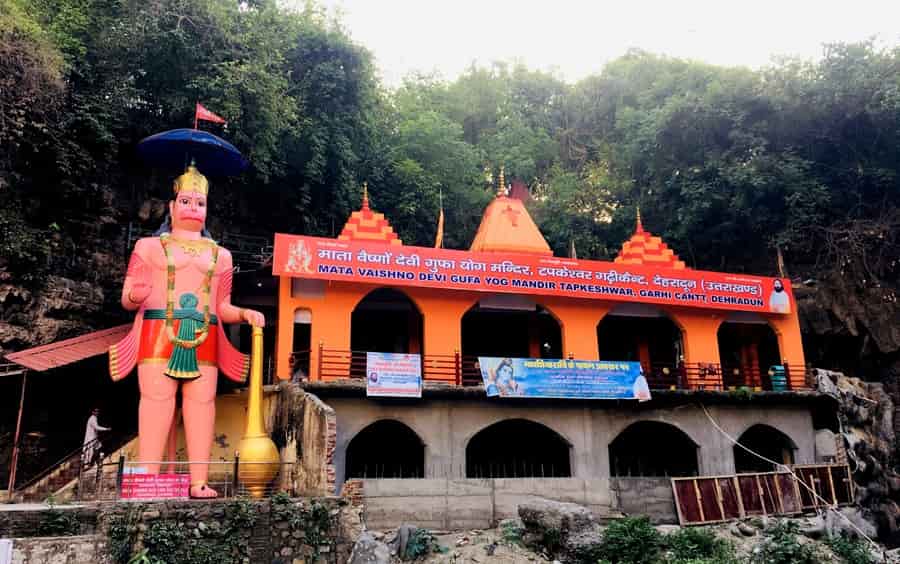
Situated in the capital city of Dehradun, Tapkeshwar Temple is a unique shrine dedicated to Lord Shiva. What sets it apart is the natural cave where the temple is located and the continuous dripping of water on the Shiva Linga, giving the temple its name. Devotees believe that the water from the cave has healing properties. The annual fair held during Shivratri attracts a multitude of pilgrims and showcases the vibrant cultural heritage of the region.
Baijnath Temple
- Location: Bageshwar district, along the banks of the Gomati River (Kumaun region)
- Deity: Lord Shiva
- Built In: 12th century by Katyuri rulers
- Best Time to Visit: April to June and September to November
- How to Reach: Drive or trek from Bageshwar
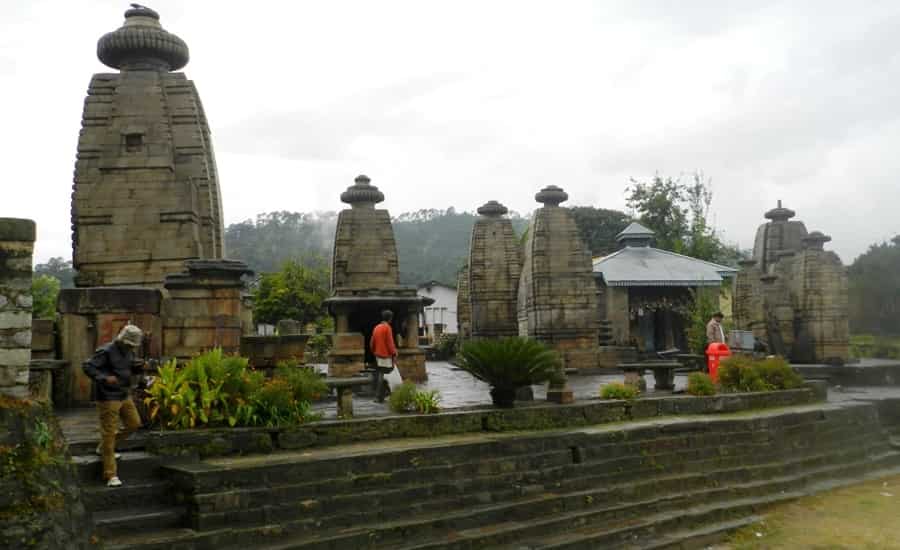
Nestled in the town of Bageshwar, Baijnath Temple is an ancient complex dedicated to Lord Shiva. The main temple, constructed in the 12th century, boasts intricate carvings and exquisite sculptures. The temple comes alive during the annual Uttarayani fair when devotees gather to seek Lord Shiva’s blessings. Baijnath Temple not only serves as a place of worship but also stands as a testament to the architectural prowess of the Katyuri dynasty that once ruled this region.
Chitai Golu Mandir
Location: Almora district (Kumaun region)
Deity: Golu Devta, ‘God of Justice.’
Built in: 12th century by Chand dynasty
Best Time to Visit: Year-round, with spring and autumn preferred.
How to Reach: About 9 km from Almora, accessible by road, buses, and taxis.
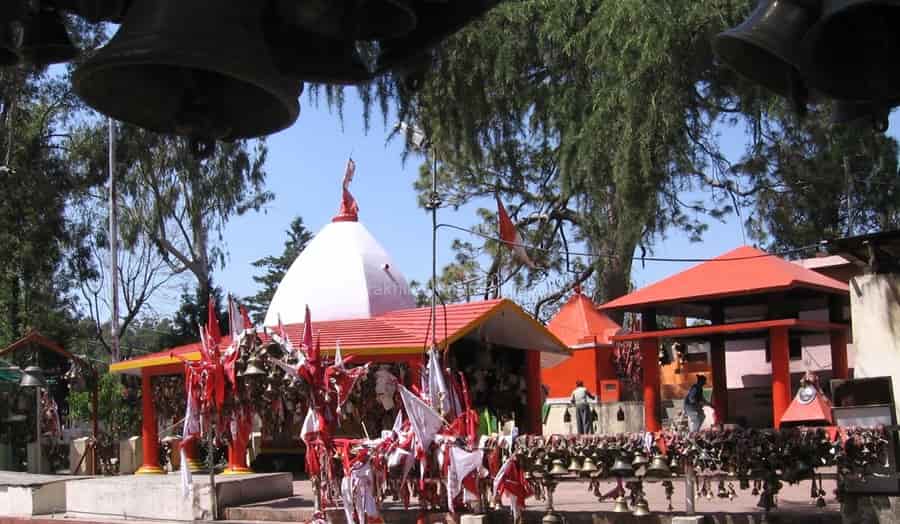
The renowned Chitai Golu Devta Temple in Almora is dedicated to Golu Devta, also known as Goljyu Devta, believed to be an incarnation of Lord Shiva in the form of Gaur Bhairav. While Almora houses several temples dedicated to Golu Devta, the Chitai Golu Devta Temple holds special reverence, considered the most sacred among them. Devotees believe that the temple has the power to fulfill any sincere wish, provided it is made with a clear conscience. Located approximately 9 kilometers from Almora, this temple stands as a spiritual haven, drawing worshippers and seekers from far and wide to experience the divine aura and the belief in wish fulfillment associated with this sacred site.
Rudranath Temple
- Location: Chamoli District (Garhwal region)
- Deity: Lord Shiva.
- Built by: Pandavas, according to legend
- Best Time to Visit: May to October.
- How to Reach: Trek from Sagar village.
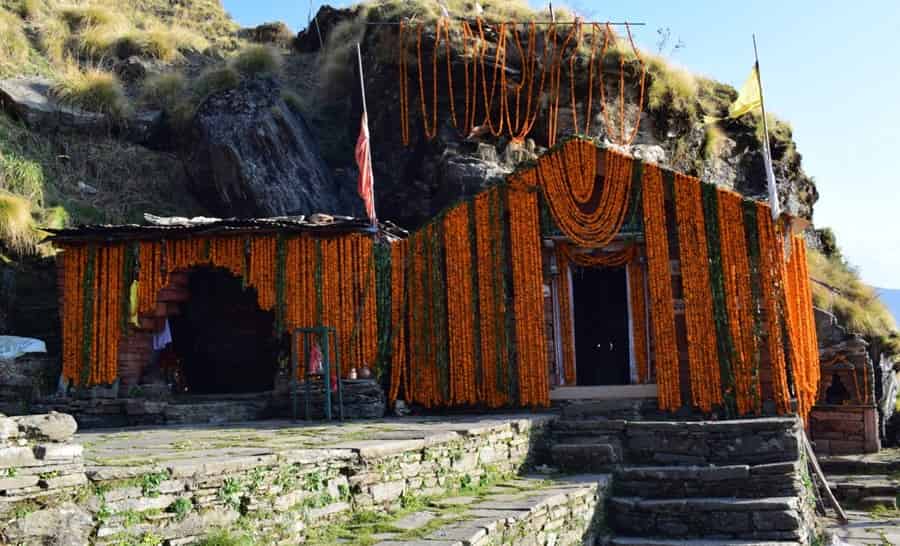
Nestled in the pristine Garhwal Himalayas of Uttarakhand, Rudranath Temple stands as a venerable sanctuary dedicated to Lord Shiva, a sacred destination for devout pilgrims and seekers of spiritual tranquility. As part of the Panch Kedar pilgrimage circuit, this ancient temple holds a unique allure, set against the backdrop of awe-inspiring mountainous landscapes. Devotees embark on a challenging trek to reach the temple, navigating through dense forests and alpine meadows, adding an adventurous element to the spiritual journey. The sanctity of Rudranath Temple is heightened by its historical significance and the palpable sense of divine presence, making it a cherished site for worship, meditation, and communion with nature in the heart of the Himalayas.
Kalpeshwar Temple
- Location: Chamoli District (Garhwal region)
- Deity: Lord Shiva
- Built In: The Pandavas
- Best Time to Visit: May to June and September to November
- How to Reach: Trek from Helang
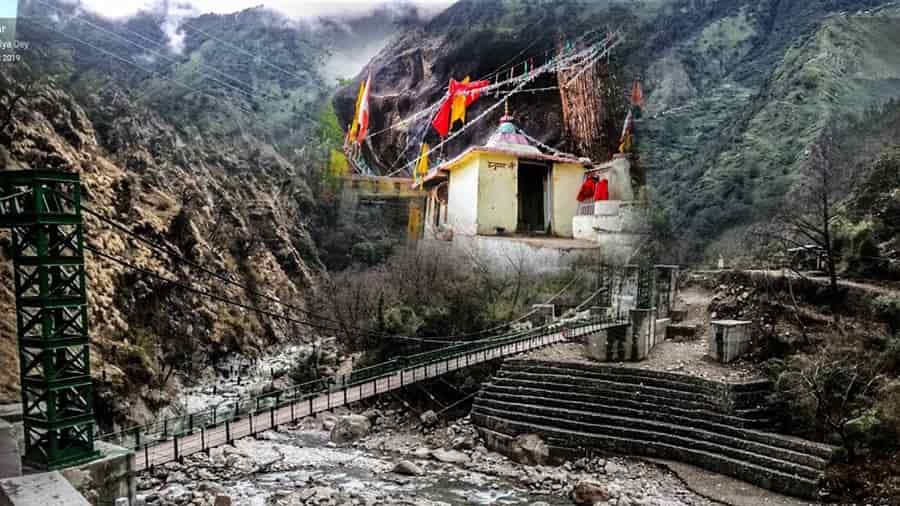
As one of the Panch Kedar temples, Kalpeshwar Temple is dedicated to Lord Shiva in his “matted hair” form. What distinguishes this temple is its accessibility throughout the year, making it unique among the Panch Kedar. Nestled in a picturesque valley near Urgam, the temple provides a serene atmosphere for meditation and introspection. Pilgrims embark on a spiritual journey to Kalpeshwar, seeking inner peace and the divine presence of Lord Shiva amidst the pristine Himalayan surroundings.
Tungnath Temple
- Location: Rudraprayag District (Garhwal region)
- Deity: Lord Shiva
- Built By: The Pandavas
- Best Time to Visit: May to June and September to November
- How to Reach: Trek from Chopta
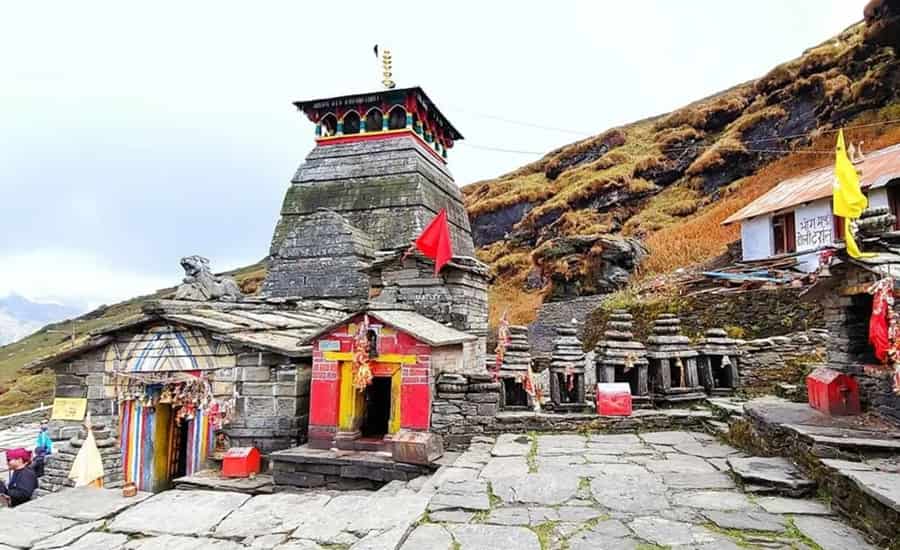
The highest Shiva temple in the world, Tungnath, is an integral part of the Panch Kedar pilgrimage. Located at an elevation of 3,680 meters, the temple offers breathtaking panoramic views of the surrounding peaks. Devotees undertake a challenging trek to reach Tungnath, and the journey itself becomes a test of both faith and endurance. The spiritual aura of Tungnath, coupled with the mesmerizing Himalayan landscapes, makes it a place of profound reverence for Lord Shiva’s devotees.
- Suggested Tour: Panch Kedar Yatra Package
Neelkanth Mahadev Temple
- Location: Rishikesh (Garhwal region)
- Deity: Lord Shiva
- Built By: King Udayaditya between 1116 to 1137.
- Best Time to Visit: Throughout the year
- How to Reach: Trek from Rishikesh
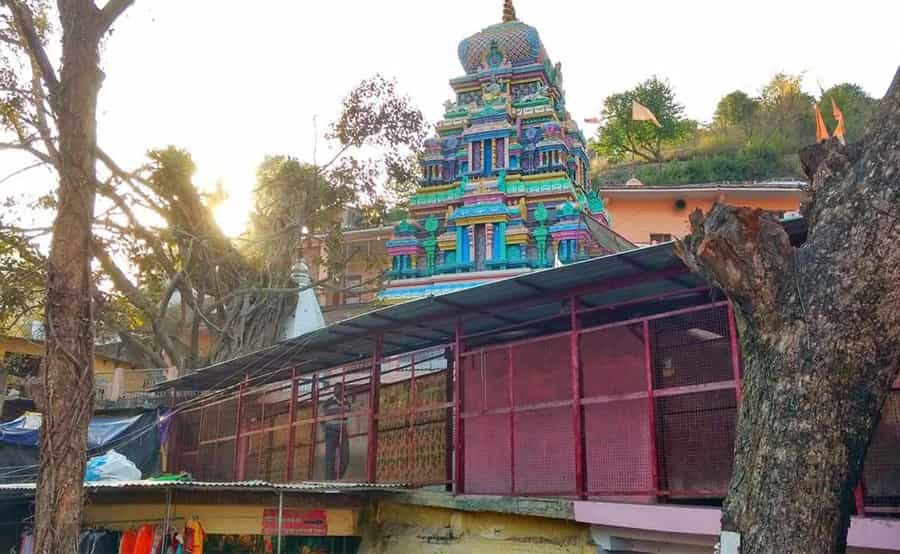
Situated near Badrinath, Neelkanth Mahadev Temple is dedicated to Lord Shiva, specifically in his Neelkanth (blue-throated) form. The temple is perched against the backdrop of the towering Garhwal Himalayas and holds a significant place in Hindu mythology. Legend has it that Lord Shiva consumed the poison during the churning of the ocean, turning his throat blue. Pilgrims visit Neelkanth Mahadev to seek Lord Shiva’s blessings and witness the divine beauty of the temple set amidst the majestic peaks.
Madmaheshwar Temple
- Location: Rudraprayag District (Garhwal region)
- Deity: Lord Shiva
- Built In: Ancient
- Best Time to Visit: May to June and September to November
- How to Reach: Trek from Kalimath
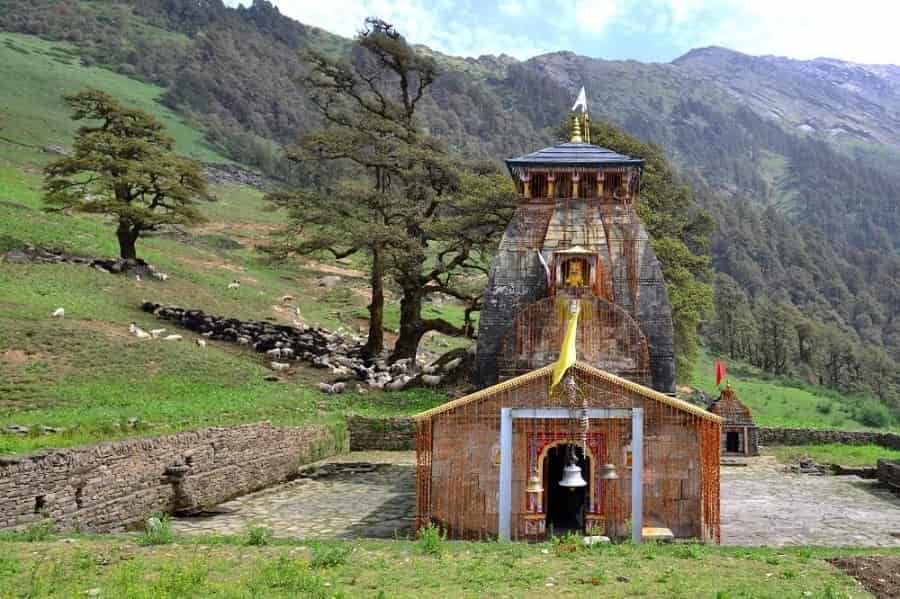
As one of the Panch Kedar temples, Madmaheshwar is dedicated to Lord Shiva in his “butter” form. Surrounded by lush meadows and dense forests, the temple is reached through a scenic trek. The tranquil ambiance of Madmaheshwar, combined with the spiritual vibrations, provides a serene retreat for devotees. The temple stands as a testament to the deep-rooted spirituality that permeates the Garhwal region, inviting pilgrims to connect with the divine in the lap of nature.
Trayambakeshwar Temple
- Location: Rishikesh (Garhwal region)
- Deity: Lord Shiva
- Built By: Adi Guru Shankaracharya in the 12th century
- Best Time to Visit: Throughout the year
- How to Reach: Drive or trek from Rishikesh
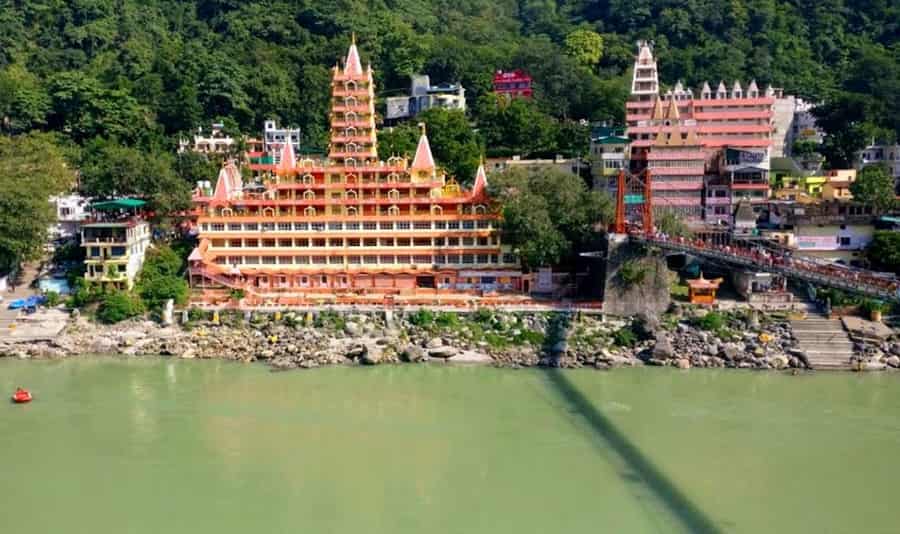
Located on the banks of the sacred Ganges in Rishikesh, Trayambakeshwar Temple is dedicated to Lord Shiva. The temple’s strategic location provides devotees with a peaceful and spiritually charged environment to offer prayers and seek blessings. The rhythmic chants and the soothing sound of the flowing Ganges create a tranquil atmosphere, making Trayambakeshwar a popular destination for both pilgrims and seekers of spiritual solace.
Chandrabadni Temple
- Location: Tehri Garhwal District (Garhwal region)
- Deity: Goddess Chandrabadni
- Built In: Ancient
- Best Time to Visit: Throughout the year
- How to Reach: Trek from Tehri or drive
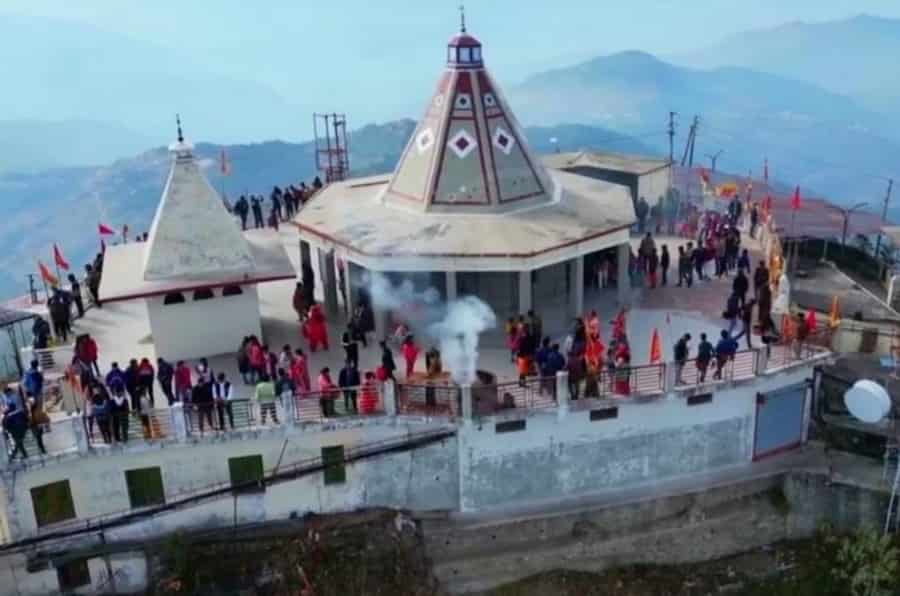
Perched atop a mountain near Tehri, Chandrabadni Temple is dedicated to Goddess Chandrabadni. The temple offers not only a spiritual sanctuary but also breathtaking panoramic views of the Garhwal region. Pilgrims undertake a trek to reach the temple, immersing themselves in the natural beauty that surrounds the sacred site. Chandrabadni Temple serves as a place for introspection and connecting with the divine feminine energy, making it a unique and spiritually enriching destination in the heart of Uttarakhand.
In conclusion, Uttarakhand’s temples are not just architectural marvels but repositories of spirituality, cultural richness, and natural beauty. These sacred sites, scattered across the region, offer pilgrims and travelers a unique opportunity to delve into the religious tapestry of the Himalayas. Whether it’s the challenging ascent to the Panch Kedar temples or the serene surroundings of Haridwar’s riverbanks, each temple contributes to the holistic experience of spiritual exploration.

 Call
Call WhatsApp
WhatsApp Enquiry
Enquiry